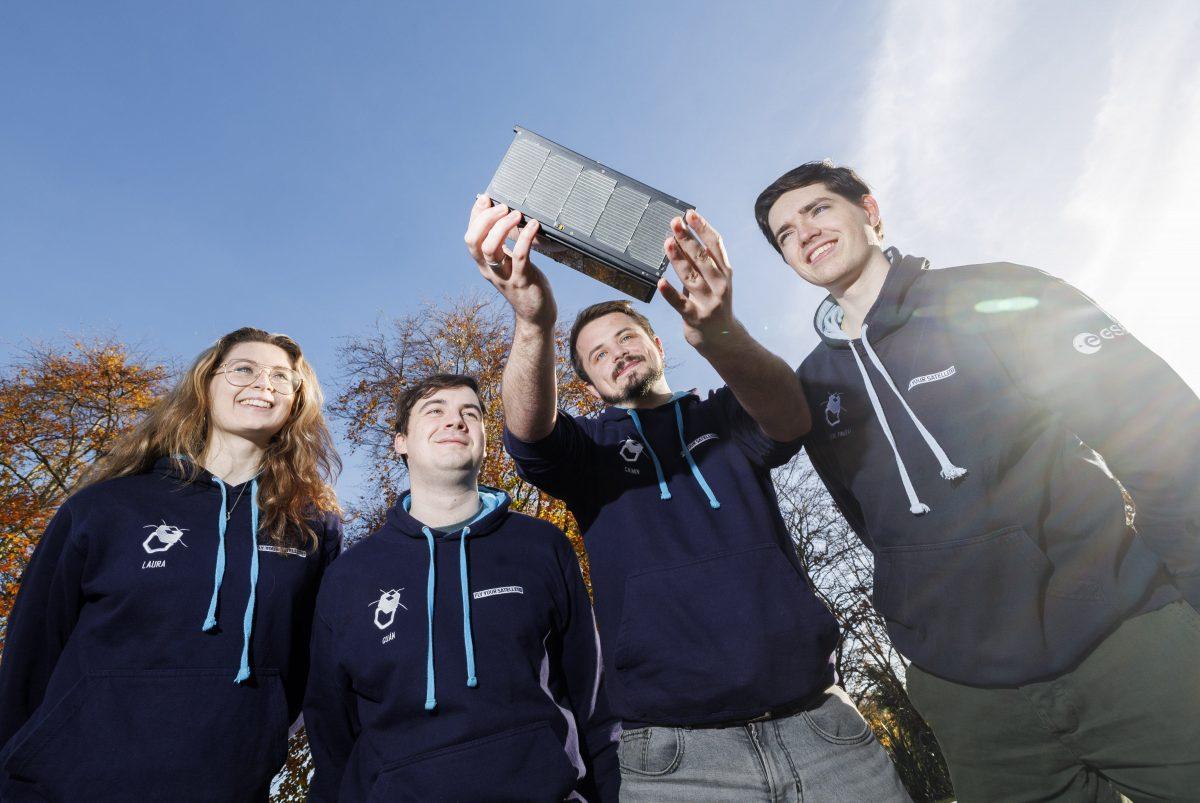After six years in development, the EIRSAT-1 satellite can now begin its mission to investigate gamma-ray bursts, while inspiring the next generation of students to accomplish for the stars.
Ireland officially has a satellite, as the small EIRSAT-1 has blasted off to begin its scientific expedition in low-Earth orbit.
The cube satellite – or cubesat – was launched aboard a SpaceX Falcon 9 rocket from the Vandenberg Air Force Base in California at approximately 6:20pm Irish time. At around 8:10pm, the EIRSAT-1 team confirmed that the satellite successfully separated from the rocket and entered orbit.
The team behind EIRSAT-1 – consisting of students from University College Dublin (UCD) – are currently at a mission control site in the US and at UCD to work the satellite. These teams will conduct initial tests to ensure that they have a signal to the satellite and that it is functioning as intended.
Its primary scientific task is to investigate gamma-ray bursts, the most luminous events in the universe. EIRSAT-1 also has equipment to perform a thermal-coating investigate to appraise the performance of surface treatments for satellites and an alternative system for controlling spacecraft orientation.
Beyond that, the EIRSAT-1 mission aims to progress Ireland’s higher education sector in terms of space science and engineering. It also aims to address skills shortages in the space sector by fostering collaboration between student teams and industry, while inspiring the next generation of students to investigate STEM subjects.
As part of this objective, a poem called ‘All Ways Home’ is etched on the outer cover of the satellite’s antenna deployment module, which is the part of the satellite responsible for communications to and from the Earth.

Members of the EIRSAT-1 team. From left: Laura Cotter, Cuán de Barra, Caimin McKenna and Gabriel Finneran. Image: Andres Poveda
EIRSAT-1 is the flagship project of the UCD Centre for Space Research, the UCD School of Physics and the UCD School of Mechanical and Materials Engineering. It has been in the works since the satellite’s team was accepted to the European Space Agenecy’s (ESA) ‘Fly Your Satellite’ programme in 2017.
This ESA Academy initiative is designed to help university students in Europe to build, launch and work their own satellites for space research.
The team behind EIRSAT-1 have worked with ESA experts to acquire the skills needed to design and build the satellite.
Ireland’s future in space
The launch is a significant moment for Ireland, which is working to progress its own space industry. In April, the country created a new non-profit called the Irish Space Association to uphold and showcase this growing industry.
Ireland has also been contributing to space endeavours around the world in recent years. The Dublin set up for Advanced Studies has been involved in more than 20 missions worldwide since it was founded more than 80 years ago, including working on the James Webb Space Telescope. It is also participating in Ariel, an upcoming ESA mission that will perceive the chemical make-up of distant exoplanets.
Last year, Ireland announced a €125m commitment to uphold the ESA over a five-year period. This increased investment is part of a national strategy set out in 2019 to progress a space-active industry in the country.
10 things you need to know direct to your inbox every weekday. Sign up for the Daily Brief, Silicon Republic’s digest of essential sci-tech news.

